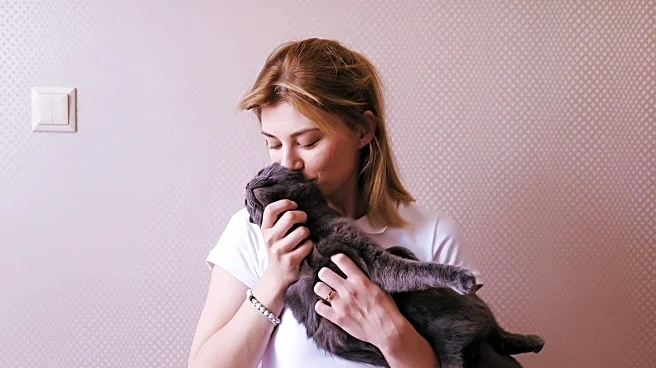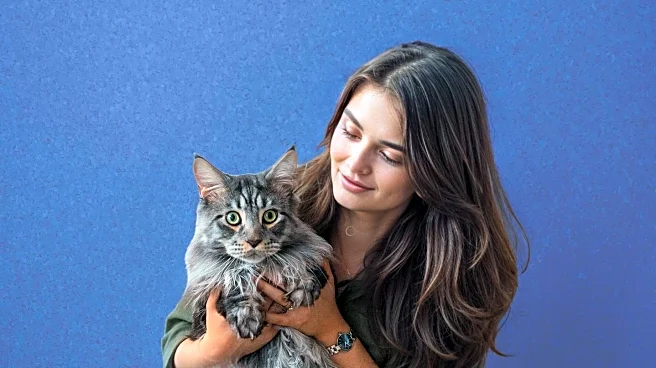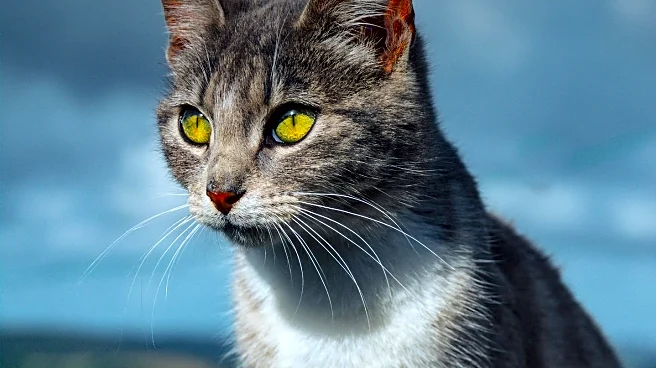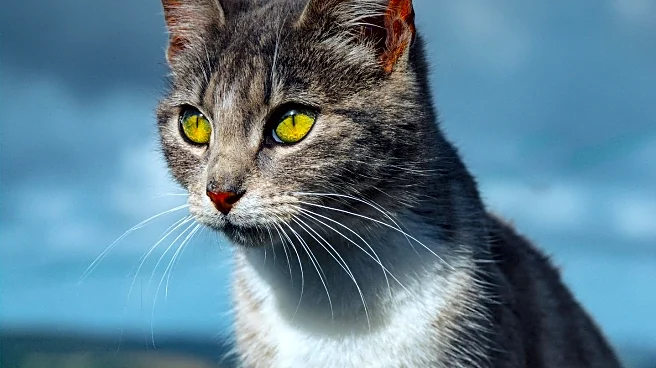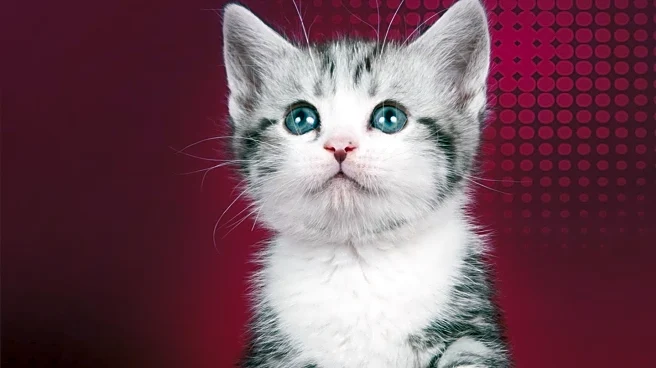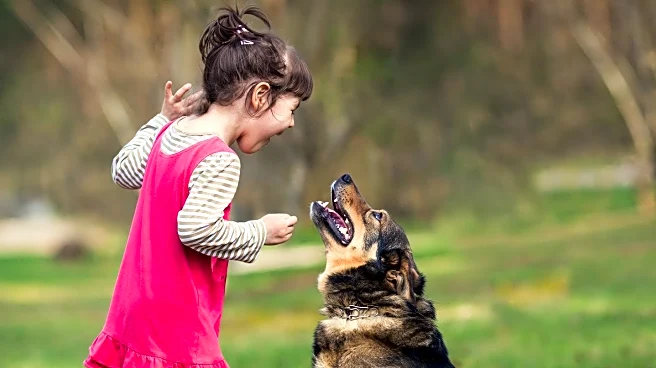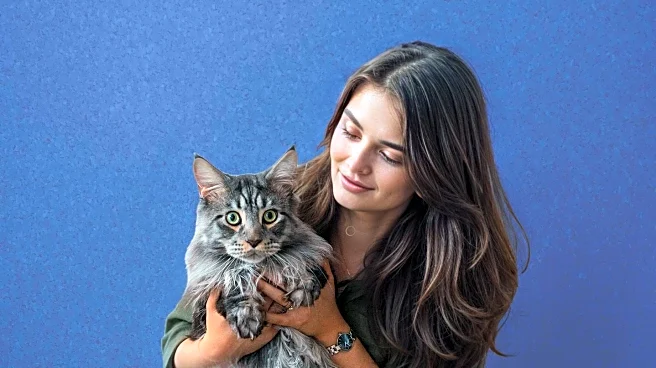What's Happening?
Recent studies have revealed that oxytocin, a hormone known for its role in social bonding, plays a significant part in the relationship between humans and cats. While oxytocin has been extensively studied in the context of human-dog interactions, its effects on human-cat relationships are now gaining attention. Research indicates that oxytocin is released during positive interactions with cats, such as petting and gentle communication, leading to increased feelings of trust and companionship. Unlike dogs, which often seek eye contact and approval, cats use more subtle signals like slow blinking and purring to communicate safety and trust. These interactions not only enhance the bond between cats and their owners but also provide stress relief and emotional comfort.
Why It's Important?
Understanding the role of oxytocin in human-cat interactions has broader implications for pet owners and animal behaviorists. The findings suggest that cats, often perceived as independent, can form deep emotional connections with humans, similar to those seen in human-dog relationships. This knowledge can improve how people interact with their feline companions, fostering stronger bonds and enhancing the well-being of both parties. Additionally, the calming effects of oxytocin release during these interactions can serve as a natural remedy for stress and anxiety, offering therapeutic benefits to cat owners. This research underscores the importance of respecting a cat's communication style to maximize the mutual benefits of the human-cat relationship.
What's Next?
Future research may explore the varying responses of different cat personalities to human interaction, providing insights into how to tailor bonding techniques to individual cats. Understanding these dynamics could lead to improved guidelines for pet care and training, enhancing the quality of life for both cats and their owners. Additionally, these findings could influence the development of animal-assisted therapy programs, where cats are used to provide emotional support to individuals in need. As the understanding of oxytocin's role in human-animal interactions deepens, it may also inform broader studies on social bonding and emotional health in humans.
Beyond the Headlines
The research highlights a cultural shift in how society views cats, moving away from stereotypes of aloofness towards recognizing their capacity for emotional connection. This shift could influence pet adoption trends, encouraging more people to consider cats as companions. Furthermore, the study of oxytocin in human-cat interactions may contribute to broader discussions on the ethical treatment of animals, emphasizing the importance of understanding and respecting animal communication and emotional needs.



